What is the color brown, and why does it matter in home decor, wall art—and even small business branding? Brown is a grounding, natural, and richly versatile color with applications that stretch beyond aesthetics. Whether you’re selecting paint, accent pillows, or business stationery, understanding the emotional and visual effect of brown can help you make confident and creative decisions.

This article explores the color brown in depth—from its composition in color theory to its uses in interior design and branding. Plus, you’ll find links to related wall art and decor inspirations, and a connection to how brown fits into the broader conversation about brand color strategy.
Article Content:
- How Is the Color Brown Created?
- The Meaning of Brown in Decor and Design
- Brown and Offline Marketing for Small Businesses
- Using Brown in Home Decor
- Brown Color Schemes & Pairings
- Effects of Brown in Design
- Brown in Themed Celebrations
- Nature-Inspired Brown Palettes
- Frequently Asked Questions About Decorating and Branding With Brown
1. How Is the Color Brown Created?
In color theory, brown is not a primary color, but a composite. How you arrive at brown depends on the color model:
Understanding how brown is formed is useful whether you’re blending paints for a canvas, creating a wall mural, or setting the background tone for printed business materials.
2. The Meaning of Brown in Decor and Design
Brown evokes stability, warmth, and reliability. It draws from nature—think soil, bark, leather, and stone—and is often associated with comfort, tradition, and strength.
In Interior Design:
- Creates cozy, inviting atmospheres.
- Serves as a neutral or a grounding element.
- Works well across styles: rustic, modern, boho, and minimalist.
In Branding:
While not the most commonly used branding color, brown can be a powerful differentiator. It signals:
- Authenticity – handmade, natural, or organic brands.
- Earthiness – eco-conscious or sustainability-focused businesses.
- Trustworthiness – useful in packaging for food, coffee, wellness products.
⇒ See how brown fits into branding strategy in our article on How to Choose Brand Colors
3. Brown and Offline Marketing for Small Businesses
As your brand extends into offline marketing materials—such as business cards, flyers, thank-you tags, and loyalty punch cards—brown offers a warm, professional palette that stands out in a sea of white and gray.
- Artisanal and craft brands
- Bakeries, cafés, chocolatiers
- Sustainable or organic shops
- Legal or counseling services (when paired with gold or charcoal)
⇒ While we continue building out specific branding collections, you can browse all our editable designs—many in warm, earthy palettes—via our Zazzle profile.
4. Using Brown in Home Decor
From wall art to throw pillows, brown can balance brightness, bring warmth, or tone down vivid contrasts. Here’s how it can be used:
- Walls & Furniture: Deep chocolate browns create intimacy; tan and beige open up space.
- Textiles & Art: Brown throw pillows, frames, or wall art act as bridges between bold accent colors.
- Natural Finishes: Wooden tones add timeless charm and an organic feel.
5. Brown Color Schemes & Pairings
When it comes to combining brown with other colors, there are a few key color schemes to consider according to the color theory.
Complementary Color Schemes:
These schemes use brown paired with colors from the opposite side of the color wheel, mainly cool tones like blues and grays, for strong contrast and visual appeal.

- Brown and Blue (for Balance and Sophistication)
Brown: #8B5E3C (Medium Coffee Brown)
Blue: #3B82F6 (Azure Blue / Brand-friendly blue) - Brown and Teal (Fresh and Modern)
Brown: #7C4F32 (Chestnut Brown)
Teal: #008080 (Classic Teal) - Brown and Steel Gray (Masculine and Industrial)
Brown: #5C4033 (Dark Brown)
Steel Gray: #708090 (Slate Gray /Steel Gray)
Both Decorative and Branding Inspiration
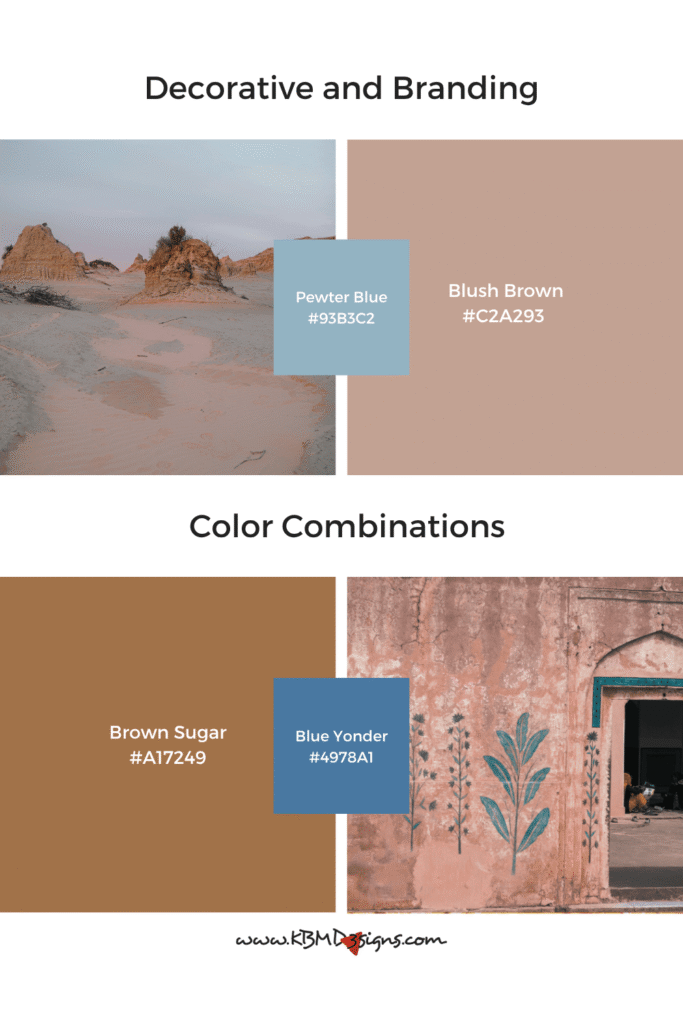
- Blush Brown #C2a293 & Pewter Blue #93B3C2
- Brown Sugar #A17249 & Blue Yonder #4978A1
Analogous Color Schemes:
Analogous color schemes involve pairing brown with colors that are adjacent to the color wheel. These can also create a more harmonious and cohesive feel and are ideal for branding, weddings, and packaging.

- Brown + Orange + Red (Warmth and Richness)
Brown: #A0522D (Sienna)
Orange: #E07B39 (Pumpkin Orange)
Red: #C1443E (Rusty Brick Red) - Brown and Golden Yellow (Sun-Kissed and Inviting)
Brown: #996515 (Golden Brown)
Golden Yellow: #F4C430 (Saffron Yellow)
6. Effects of Brown in Design
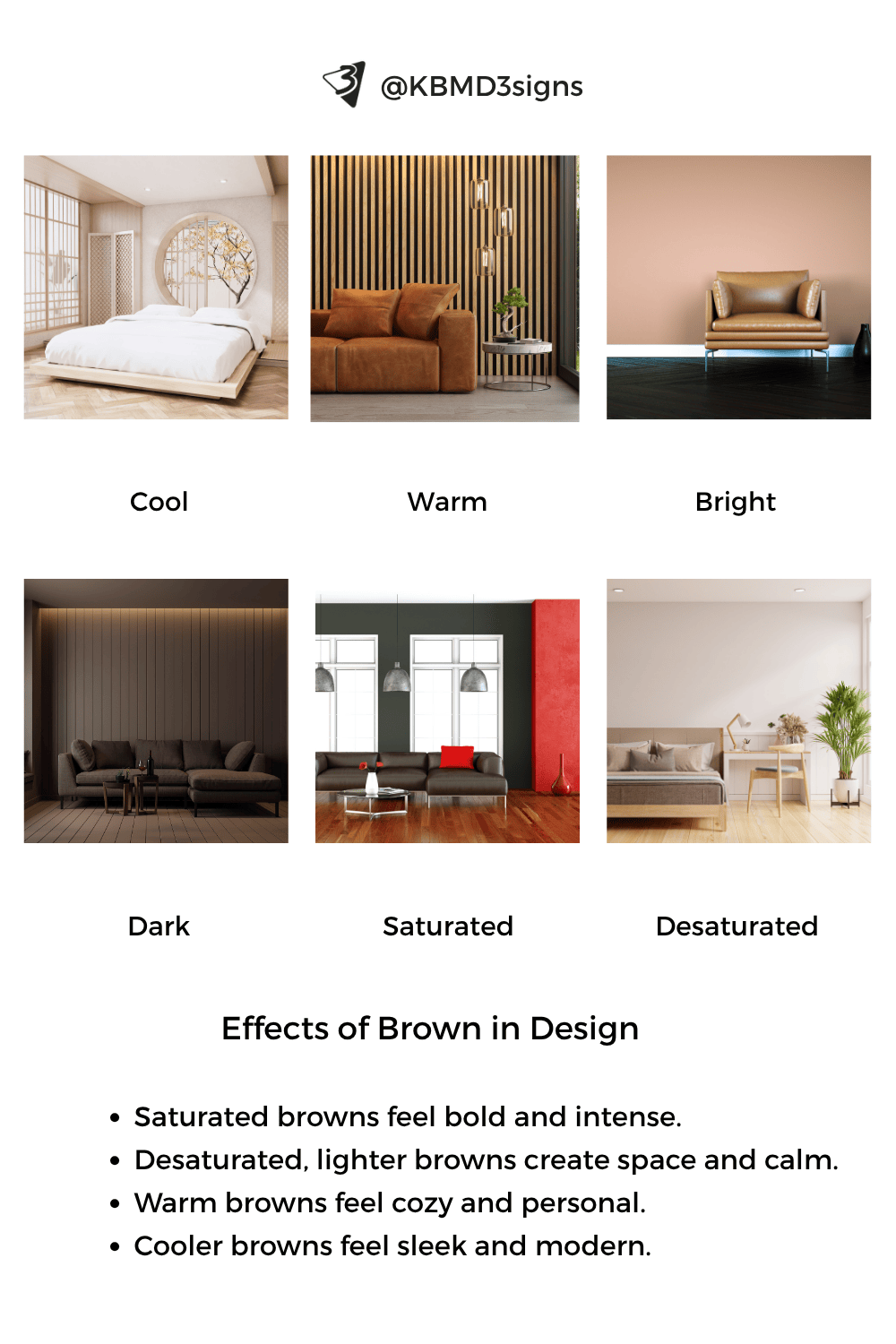
- Saturated browns feel bold and intense.
- Desaturated, lighter browns create space and calm.
- Warm browns feel cozy and personal.
- Cooler browns feel sleek and modern.
These qualities apply equally to home decor and print materials. Choosing the right brown tone for a business card, for instance, can communicate approachability or prestige at a glance.
Applied Brown Color Combinations
One of the most interesting aspects of brown is its ability to work well with a variety of other colors. Brown can be paired with bright and bold colors such as red, orange, or yellow to create a vibrant and energetic space. Or it can be paired with cool and soothing hues, such as blue or green, to create a more calm and peaceful environment. KBM D3signs uses color tools to match colors.
Explore more brown-themed wall art and decor in our curated Brown Color Design Gallery.
- Brown and blue throw pillows on a steel-grey couch
- White-patterned brown pillow on a turquoise-blue armchair
- Green and brown throw pillows on the orange-red couch
- Yellow and brown accent pillows on a red armchair
- Brown, yellow and orange cushions on a yellow couch
- Purple and brown throw cushions accenting a grey couch
- Grey and brown pillows accenting a white couch
- Yellow, blue, and brown throw pillows accenting a white couch
Visit the KBM D3signs store on Zazzle’s Pod platform!
Each template allows you to customize the fill and element colors, as well as replace the text and image placeholders. Contact KBM D3signs for help with customization or design transfer.If you can’t find a design that aligns with your vision but are interested in influencing the design outcome, explore the Zazzle Marketplace.
Alternatively start and design from scratch!
KBM D3signs uses these color tools to match colors.
7. Brown in Themed Celebrations
Even in event design, brown plays a unique role:
- Weddings: Brown works beautifully in rustic or autumn weddings—paired with gold, blush, or dusty blue.
- Kids’ Birthday Parties: Woodland or safari themes come alive with brown backdrops and earthy illustrations.
Examples of Brown Invitations from the Zazzle Marketplace
8. Nature-Inspired Brown Palettes
Pin-worthy and printable! These palettes reflect brown as it naturally appears in the world around us.
Autumn Leaf Palette:

Gazelle-Inspired Palette:
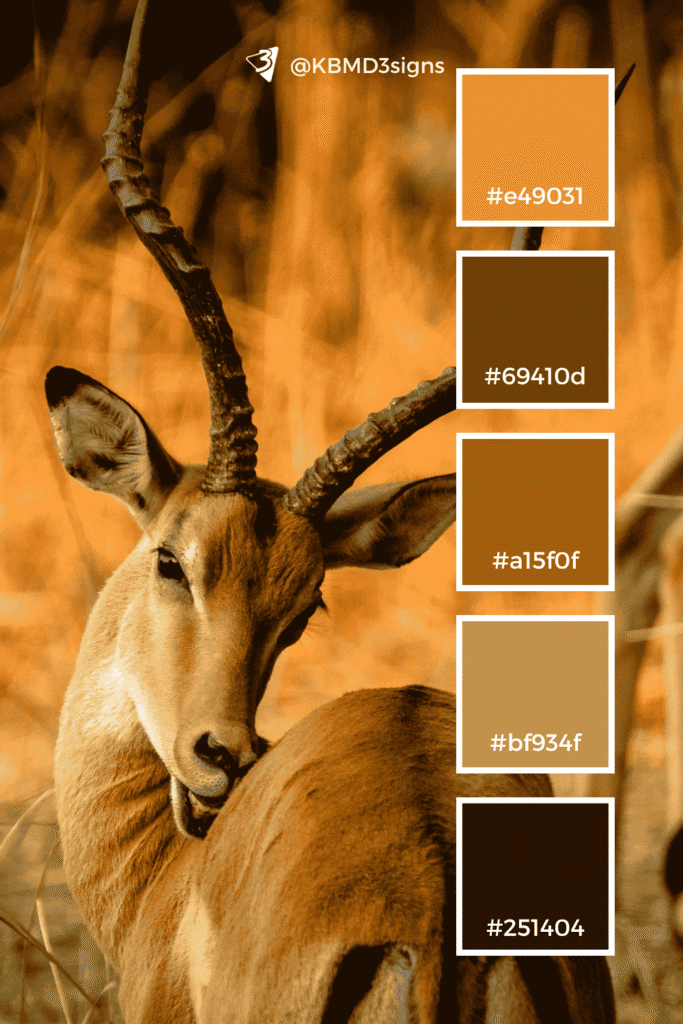
Bison Palette:
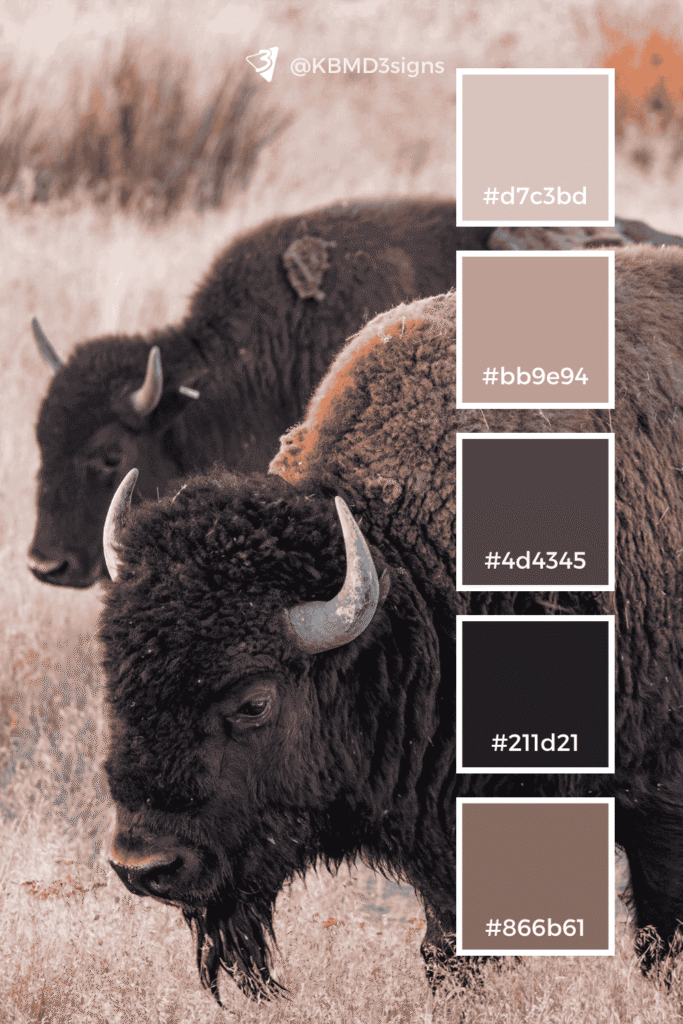
9. Frequently Asked Questions (FAQs) About Decorating With Brown
It offers warmth, earthiness, and versatility. Great for creating cozy, inviting spaces
Yes! Pairing it with clean lines, white, or muted blues and greens can bring a sleek, updated feel.
Brown is perfect for natural, handmade, organic, or vintage-inspired businesses
Contrast brown with vibrant accent colors or metallics like brass or gold. Use varied textures—like leather, linen, or wood grain.
Definitely. It softens harsh tones, feels approachable, and helps printed designs stand out with warmth.
We create wall art and customizable templates designed to work across color schemes—including plenty of warm, earthy tones like brown.
⇒ Visit Our Zazzle Profile to explore home decor and offline branding tools you can personalize.
-
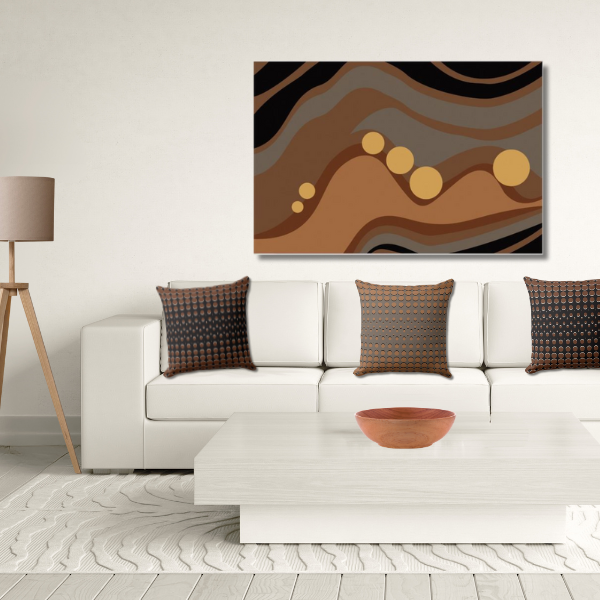
Black and Brown Wall Art to Enhance Your Home Decor
Read the post …: Black and Brown Wall Art to Enhance Your Home Decor -
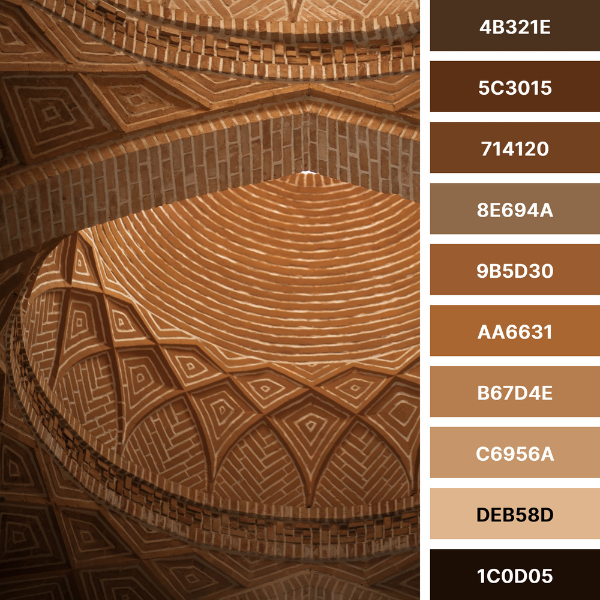
A Black and Brown Color Palette to Enhance Your Home Decor
Read the post …: A Black and Brown Color Palette to Enhance Your Home Decor -
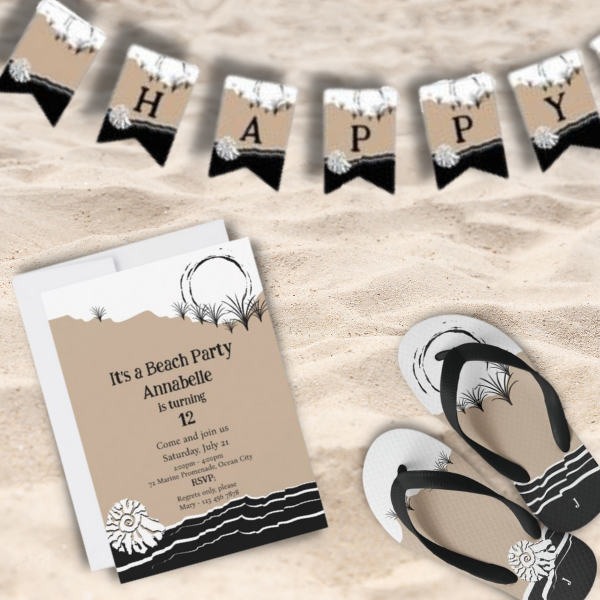
Beach Birthday Party Invitation For Kids
Read the post …: Beach Birthday Party Invitation For Kids -
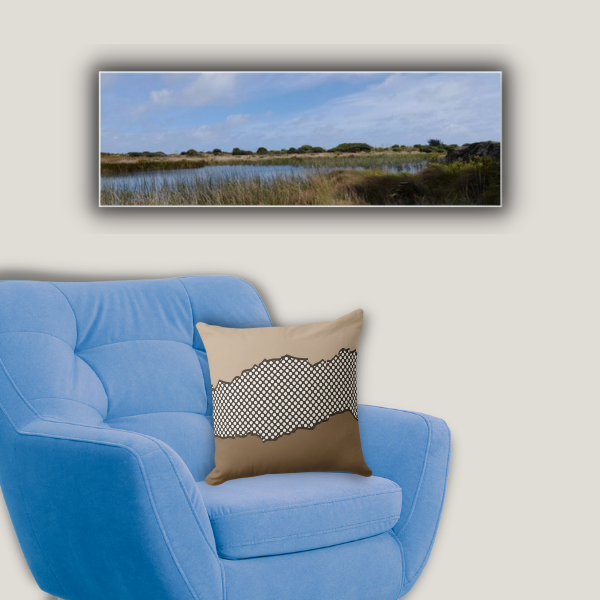
Brown And White Pillows Meet Landscape Photographs
Read the post …: Brown And White Pillows Meet Landscape Photographs -
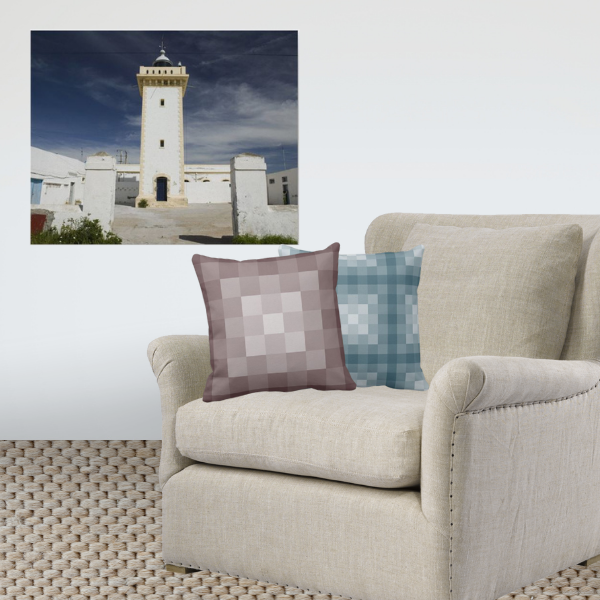
Brown and Blue Pillows
Read the post …: Brown and Blue Pillows -
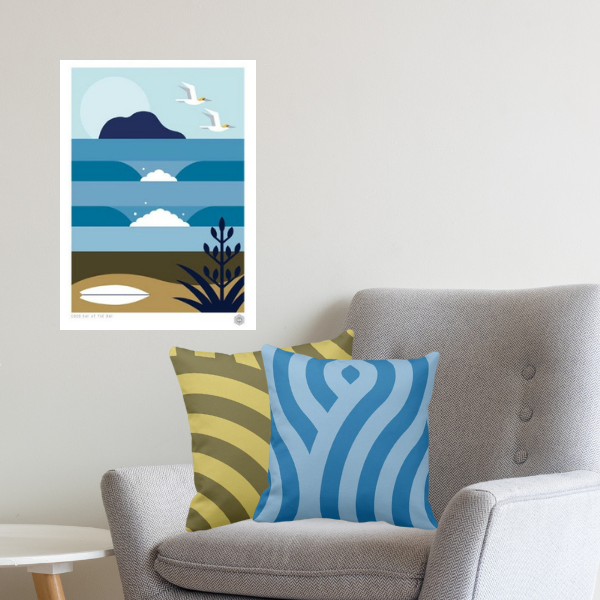
Good Day At The Bay Designer Print And Brown And Blue Cushions
Read the post …: Good Day At The Bay Designer Print And Brown And Blue Cushions


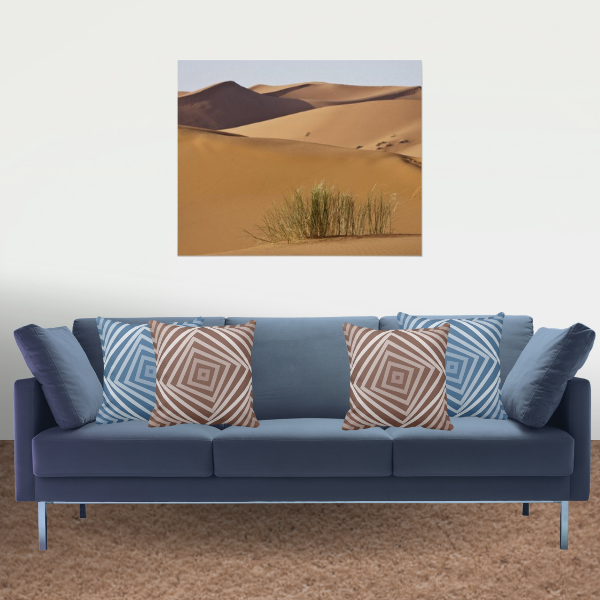


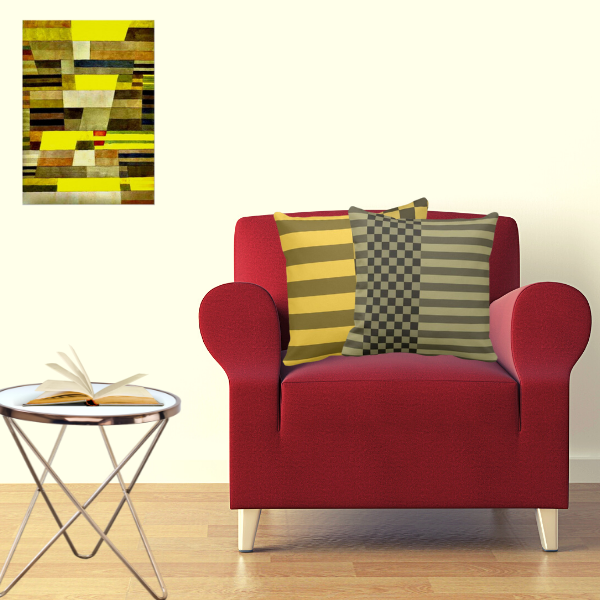
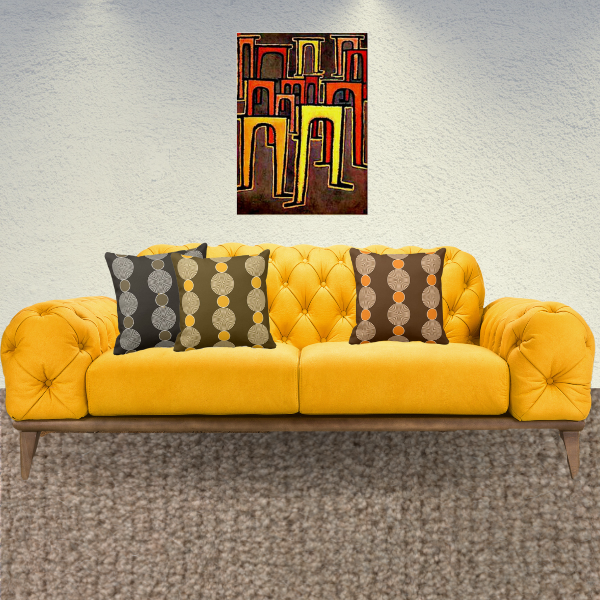
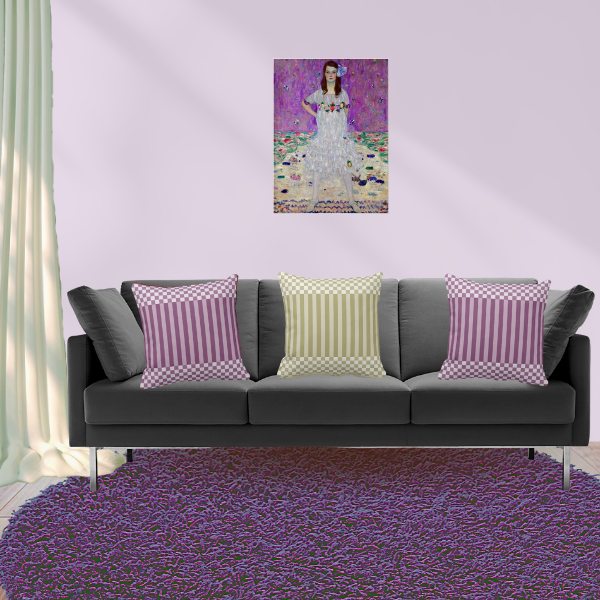
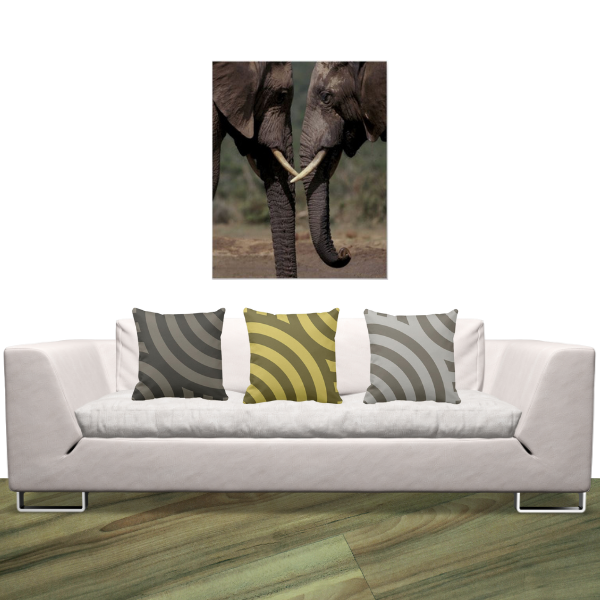
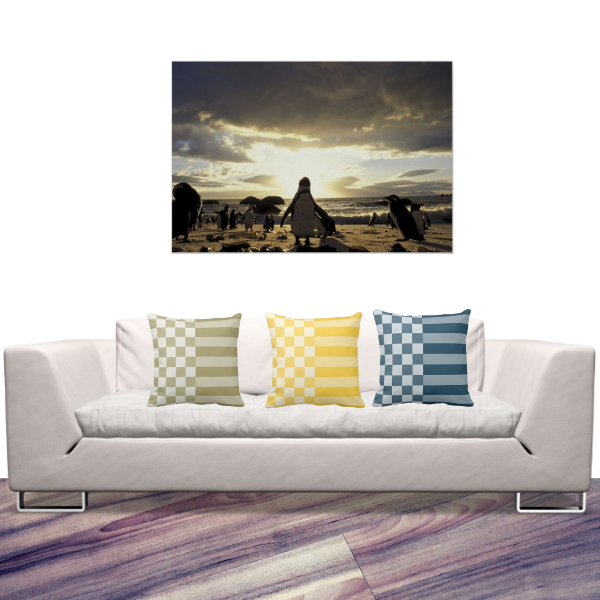




Hello I am so happy I found your website, I really found you by accident, while I was browsing on Google for something else,
Nonetheless I am here now and would just like to say thanks a lot for a remarkable post and a all round thrilling blog (I also love the theme/design), I don’t have time to go through it all at
the moment but I have saved it and also added your RSS feeds,
so when I have time I will be back to read a great deal more, Please do keep up the great job.
Thank you very much for your kind words. I’m glad you found my website! I’m glad to hear that you found the post remarkable and the blog exciting. Knowing that visitors like the theme and design is always wonderful. I completely understand that you don’t have the time to go through everything right now, but I’m glad that you saved the site and added the RSS feeds for future reading. I’ll certainly do my best to keep up the great work and provide you with more engaging content when you return. Please let me know if there are particular topics you’re interested in, or if you have any feedback or suggestions. Thank you for your support and I look forward to having you back to explore more!
Appreciating the time and energy you put into your site and detailed information you provide.
It’s awesome to come across a blog every once in a while that isn’t
the same out of date rehashed information. Excellent read!
I’ve bookmarked your site and I’m including your RSS feeds to my Google
account.
Thanks for your kind words and for appreciating my efforts with this site! I’m thrilled to hear that you find the in-depth information here valuable and that it’s an excellent read. It’s always my goal to provide fresh and insightful content, so I’m glad to know that it stands out from outdated sources. Your decision to bookmark the site and add the RSS feeds to your Google account means a lot to me. If there are specific topics you’d like to see covered in the future, or if you have any feedback or suggestions, please let me know. Thank you so much for your support, and I hope that you continue to find the content both interesting and informative!
Have you ever thought about including a little bit more
than just your articles? I mean, what you say is fundamental and everything.
Nevertheless think about if you added some great visuals or video clips to give your posts more, “pop”!
Your content is excellent but with pics and clips, this blog could definitely
be one of the most beneficial in its niche. Great blog!
Thank you for your insightful feedback! I truly appreciate your suggestion to incorporate visuals and video clips to enhance the overall appeal of the blog. You’re absolutely right that adding such elements could bring more vibrancy and engagement to the content. I’ll definitely take your suggestion into consideration and work on integrating more visuals to make the posts more visually appealing and dynamic. Your encouragement means a lot, and I’m committed to making this blog as beneficial and enjoyable for readers as possible. If you have any specific ideas or preferences for visual content, please feel free to share them. Thank you again for your support and for recognizing the potential for further enrichment of the blog!
Hello! I could have sworn I’ve been to your blog before
but after looking at a few of the posts I realized it’s new to
me. Nonetheless, I’m definitely delighted I stumbled upon it and I’ll be book-marking it and checking back regularly!
Welcome to the blog, and thank you for stumbling upon it! I’m thrilled to hear that you’re delighted with what you’ve found here and that you’re planning to bookmark the site and check back regularly. It’s always wonderful to have new readers discover the content. If there are any specific topics you’d like to see covered or if you have any feedback or suggestions, please feel free to let me know. I’m here to provide valuable insights and information to enhance your experience. Thank you for your support, and I look forward to having you as a regular visitor!
Wow, wonderful blog layout! How lengthy have you ever been blogging for?
you make running a blog look easy. The full look of your web site is fantastic, let alone the content material!
Thank you for your kind words about my blog! It’s great to hear that you like the layout of the blog and the overall look and feel of the site, including the content. I’ve been blogging for quite a while now. And I’m constantly tweaking the layout and content to make it as user-friendly and informative as possible. Your feedback helps me continue to provide valuable content. Please feel free to let me know if you have any suggestions or topics you’d like to see covered in future posts. Thanks again for your support!
Wow, incredible weblog structure! How lengthy have you been blogging for?
you made running a blog glance easy. The overall glance of your web site
is great, as neatly as the content material!
Thank you so much for your kind words! I’m thrilled that you find the weblog structure incredible and that you enjoyed the overall glance of the site, including the content. I’ve been blogging for quite some time, continuously refining the layout and content to make it as user-friendly and informative as possible. It’s wonderful to hear that you found the blog easy to navigate and that you appreciated the content. Your feedback is truly appreciated, and it motivates me to keep providing valuable content. If you have any suggestions or topics you’d like to see covered in future posts, please feel free to let me know. Thanks again for your support!